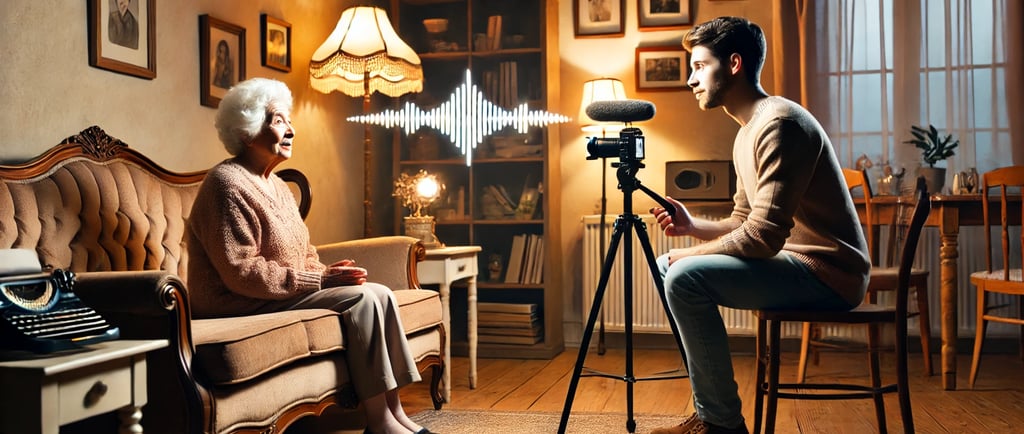From voice to page
Using AI to Transform Interviews into Written Stories: Lessons from Writing Nadene's Journey
NADENE'S JOURNEY AI WRITING
Galen Manning
12/27/20242 min read


From Voice to Page
Using AI to Transform Interviews into Written Stories: Lessons from Writing Nadene's Journey
When I began capturing video conversations for "Nadene's Journey," I faced a daunting task: transforming hours of video interviews into written stories. Traditional transcription methods would have required 200-250 hours of typing - nearly six weeks of full-time work just to get the words on paper. Like many family historians and biographers, I needed a way to preserve these precious stories without spending countless hours on mechanical transcription.
I discovered that AI transcription tools could dramatically reshape this process. Using Transcribe.com, I developed a workflow that preserved Nadene's authentic voice while reducing the mechanical work of transcription. The process, I learned, is much like developing a photograph - it happens in three distinct stages.
Stage One: Basic Development
Just as digital cameras have automated capturing images, AI now handles the basic conversion of speech to text. For interviews under 70 minutes, I simply uploaded the video through Transcribe.com's app from my iPhone. Within 15-20 minutes, the AI produced a transcript, complete with speaker identification and basic punctuation. Longer interviews required converting the video to MP3 first, but the process remained straightforward.
Stage Two: Technical Refinement
Like a photographer checking color balance and removing imperfections, the second stage requires careful human attention. This is where my knowledge of Nadene's life became essential—verifying names of people and places from rural Arkansas, checking dates, and ensuring the accuracy of family references. While AI handled the mechanical transcription, only a human familiar with the subject's life could ensure the technical details were correct.
Stage Three: Preserving Authentic Voice
The final stage proved the most crucial - and the most resistant to automation. We experimented with using ChatGPT to help refine Nadene's stories but discovered something important: like over-processed photographs, AI-refined stories often lost their authenticity. The Beauty Shop story, where Nadene described how she and her sister experimented with plant sap as makeshift beauty products, demonstrated this clearly. While we kept a small portion of the AI-refined version, most AI attempts at polishing her stories transformed her authentic rural Arkansas voice into something too polished, too different from the grandmother we knew.
A Practical System for Success
Organization proved key to managing this process effectively. I created a simple but powerful system:
A "Raw" folder containing original interviews and AI transcriptions
A master document collecting the polished Q&A content
A consistent process for moving from raw transcripts to the final narrative
This system ensured that no story details were lost while maintaining the efficiency of AI assistance.
Getting Started with AI Transcription
If you're considering using AI transcription for your biography or family history project, here's how to begin:
Choose an AI transcription service that works with your recording setup.
Test the process with a short interview to learn the quirks and limitations.
Set up your organization system before you begin.
Most importantly, while AI can handle the mechanical work of transcription, preserving authentic voices requires human understanding and care.
Just to remind you: AI serves as your assistant in documentation, but you remain the guardian of your subject's authentic voice and stories. Used thoughtfully, AI transcription tools can free you to focus on what matters most - preserving meaningful stories for future generations.
